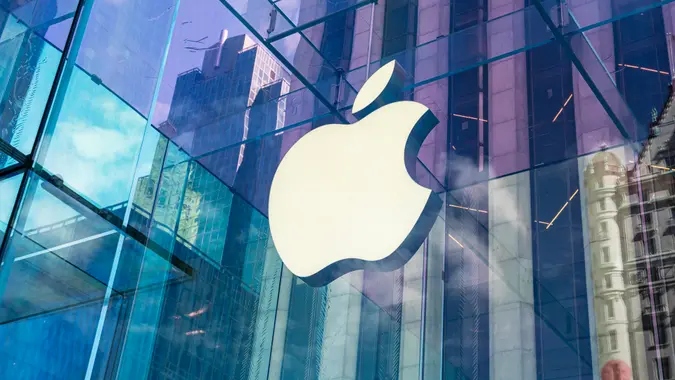I Asked ChatGPT What Will Happen To the Stock Market If the Fed Keeps Cutting Interest Rates: Here’s What It Said

Commitment to Our Readers
GOBankingRates' editorial team is committed to bringing you unbiased reviews and information. We use data-driven methodologies to evaluate financial products and services - our reviews and ratings are not influenced by advertisers. You can read more about our editorial guidelines and our products and services review methodology.

20 Years
Helping You Live Richer

Reviewed
by Experts

Trusted by
Millions of Readers
Investors can’t stop watching the Federal Reserve this year as it continues slicing interest rates to stimulate the slowing economy. According to The Wall Street Journal, the latest rate cut pushed borrowing costs to their lowest point in nearly a decade, sparking both optimism and anxiety across Wall Street.
To better understand what might come next, I asked ChatGPT what continuous rate cuts could mean for the stock market — and its breakdown was surprisingly practical.
ChatGPT said, “When the Fed keeps cutting rates, it’s basically flooding the system with cheap money. That boosts growth at first, but too much of it can distort the market.”
Its analysis aligns with what economists have been warning for months: short-term gains could turn into long-term instability if stimulus goes too far or lasts too long.
Short-Term: A Boost for Stocks
When interest rates drop, borrowing becomes cheaper and demand tends to rise. Companies use the cheaper capital to expand or buy back shares, while consumers spend more freely. As Forbes explained, these are classic conditions for a short-term stock rally.
ChatGPT noted that, “Investors usually move money from bonds into stocks because yields fall and equities look more attractive.” That shift often fuels rallies in tech and consumer sectors. The New York Times recently reported that growth stocks have led market gains since the Fed’s first rate cut this summer, suggesting bullish momentum could continue as long as liquidity remains high.
Medium-Term: It Depends on the Why
Rate cuts aren’t inherently good or bad; what matters is the reason behind them. “If the Fed is cutting rates because inflation is easing and growth is stable, that’s generally positive,” ChatGPT said. “But if it’s doing so to fight slowing earnings or recession risk, investors should be cautious.”
That distinction reflects what Forbes contributor Bill Stone argued: Rate cuts that follow economic strength often extend bull markets, while those driven by distress can trigger volatility and reversals. As companies confront weaker demand, earnings could slip even as share prices stay inflated, a setup that rarely ends well.
Long-Term: Risks Start To Pile Up
Over time, persistent rate cuts can create more problems than they solve. ChatGPT compared it to “pumping oxygen into a fire — it burns hotter but also faster.” When money becomes too cheap for too long, valuations inflate beyond what fundamentals justify. “Eventually, you get bubbles in everything from stocks to real estate,” it said.
Economists share that concern. The New York Times noted that while the Fed aims to prevent a recession, sustained easing risks reigniting inflation and undermining global confidence in U.S. currency. When inflation ticks higher again, the Fed often has to reverse course — an action that typically sends markets falling fast.
The Global and Currency Effect
One of the most underappreciated side effects of ongoing cuts is the impact on the U.S. dollar. Lower rates reduce the dollar’s appeal compared to other currencies, making exports cheaper but imports more expensive. ChatGPT said, “A weaker dollar helps exporters but can drive up commodity prices, pushing inflation back into the picture.”
The Wall Street Journal noted that as the dollar softened in early October, oil and gold prices rose — both signs that international investors were repositioning for potential inflationary shifts. This global spillover can complicate the Fed’s balancing act and introduce volatility beyond U.S. markets, especially in emerging economies reliant on dollar-denominated debt.
The Psychological Ripple
Perhaps the most interesting insight came when ChatGPT discussed investor psychology. “Markets can get addicted to low rates,” it said. “If traders believe the Fed will always step in to rescue them, risk-taking spirals out of control.” That pattern is often referred to as the “Fed put,” a term describing the belief that monetary policy will always cushion downturns.
History shows that this mindset creates moral hazard. As Forbes pointed out, previous long stretches of easy policy widened the wealth gap by boosting asset values far faster than wages. That imbalance tends to fuel political backlash and regulatory changes that eventually weigh on corporate profits, tightening the same markets those low rates once inflated.
 Written by
Written by  Edited by
Edited by 

























